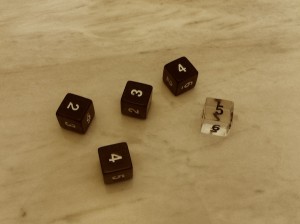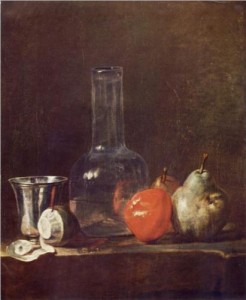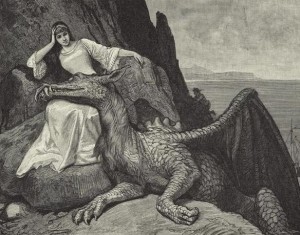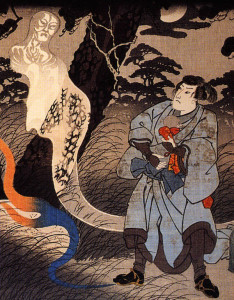Several of my favorite archetypes are rarely handled as classes in a way that satisfies me, including the necromancer, summoner, and warlock/diabolist. It is possible to simulate these types of characters in traditional D&D, but only with a specific set of spells and a higher level magic-user. In a game where you are playing to find out what kind of magic-user you become based on the spells you find this can be fun, but if you are looking to play a particular kind of magician from the beginning it can be something of a letdown.
I have already attempted to create a necromancer class, but in review that approach (with variable undead creation costs) feels a bit clunky and bases too much of the necromancer’s primary competency (undead minions) on treasure cash flow. Like a traditional magic-user’s spell preparation, the necromancer should be able to recover thralls as part of the basic resource cycle. As such, there is no cost for the basic creation and maintenance of undead thralls. Procuring corpses may still require adventuring, depending on the setting, and each body can only be used once. Scarcity of corpses can thus be used to modulate thrall disposability, but the expectation is that necromancers should be able to burn through a collection of thralls between each downtime if desired.
This necromancer does not gain new spells automatically and can only learn necromancy spells. These can be found (unlikely, as the referee is not expected to tailor treasure found to desires of specific PCs) or researched at a cost of 1000 coins per spell level. In a game where treasure yields the bulk of XP, I would expect necromancer PCs to spend most of their money on researching new spells (or making scrolls of known spells, if that is an option allowed to magic-users). This also means players can handle most spell choices on their own between sessions, only relying on the referee for final approval, easing the administrative load.
Allowing any magic spell to be re-skinned with necromantic trappings (“skeleton key” as a knock spell, negative energy blast rather than magic missile, and so forth) will likely make this class overpowered (and also indistinct). So don’t do that. Require necromancy spells to be taken from existing books or newly designed around strong (and limited) necromantic themes. This necromancer is intended to play differently than the traditional magic-user.
See downloads page for a PDF for printing conveniently front and back on one letter-sized sheet.
Necromancer
Level progression, HP, saves, attack, weapons, armor, and spell slots as magic-user.
- Prepare and cast only necromancy spells
- Maintain control over up to 1 HD worth of undead per level
- Assert control over undead as an action
- Direct any or all controlled undead as an action
- Create and repair undead minions up to 1 HD per level per downtime
- Will not generally be served by mortal retainers other than apprentices
Spells and magic items
Given that the chance of finding many necromancy spells during play without fudging is low, necromancers of any level may research new spells during downtime. This requires 1000 XP-equivalent currency units per spell level and takes one downtime action irrespective of spell level. Necromancers may only research new spells of a level that can be prepared. Necromancers may craft scrolls of known necromancy spells following the rules used by magic-users and may only use scrolls, wands, staves, or other wizardly magic items that have a strong necromancy component.
Control and direct undead
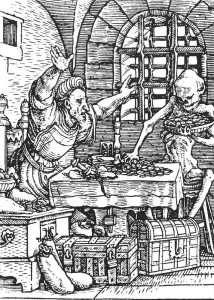
Death and the miser (source)
Necromancers may maintain control over a number of HD worth of undead equal to level. No check is required, but asserting control takes an action if done in combat. Intelligent undead deserve a saving throw and a necromancer only gets one try when attempting to influence such beings. Directing newly controlled undead must wait for another action.
Most created undead have dim and limited intelligence. They can only follow crude commands and are unable to perform complicated tasks. An action such as “pull that lever” is about the limit of undead sophistication. As an action, a necromancer may direct (or modify previous directions for) any or all currently controlled undead. Directions must be clear and vocalized but need not be overly specific. For example, “attack those orcs” is acceptable; there is no need to declare exactly which orc should be attacked.
Actions available include attack (a target), defend (a person), follow (a person or thing), guard (a location), move (to a nearby place), patrol (an area), and retrieve (a nearby item). Minions will intuit needed movement given an attack command, but may not choose the smartest route on their own. Minions instructed to defend will hold actions and use opposed combat rolls to determine the success of a potential interception.
This structure means that a necromancer can either take an action themselves during a turn (such as cast a spell) or redirect minions but not both. Undead will continue to follow existing directions until new directions are provided.
Undead become uncontrolled upon the death (though not unconsciousness) of a necromancer master and uncontrolled undead without directions are hostile to all life. A necromancer may release undead minions from service at will.
Create undead
During downtime, necromancers may create or repair a number of HD worth of undead equal to level. This may result in a necromancer having created more undead than can be controlled. Excess undead are uncontrolled and hostile to all life. The propensity of necromancers to create uncontrolled “spares” that often get loose is no small part of the profession’s generally poor reputation. Strictly speaking, no resources are needed other than corpses that have not been previously animated, though in practice a private ritual sanctum is necessary for the sake of privacy (necromancy being widely vilified as black magic). Created undead are by default a form of zombie. Other undead may be controlled but must be discovered in play or created with the aid of augmentation spells.
HD may be allocated as desired between multiple minions. For example, a fourth level necromancer may create 4 minions of 1 HD each, one minion of 4 HD, or some other combination. Undead minions attack and save as a creature of the appropriate HD, have an AC bonus equal to HD, move in combat as a lightly encumbered human (three-quarters of an unencumbered human’s rate), and gain no benefit other than style from armor. Damage is by weapon or 1d6 from fearsome unarmed strike. Undead are not effective porters and have a tendency to hide or vandalize carried objects other than raiment or armament when unsupervised.
Weapons
Even if being strict about weapon usage, it is suggested that necromancers be allowed to wield sickles and scythes because of the symbolic value of these tools to the craft of necromancy.
- Sickle: as dagger, not throwable, 1d4 damage
- Scythe: as staff, requires two hands, slashing rather than bludgeoning, 1d6 damage
Good sources of necromancy spells for use with traditional class-and-level fantasy games:
- DMGR7 The Complete Book of Necromancers ($10 PDF at the time of this writing)
- Theorems & Thaumaturgy (free)
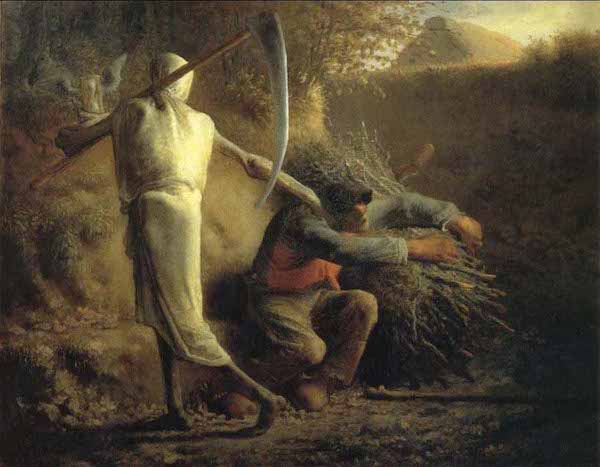
Image by Millet (source)
Thanks to Duncan E. for suggesting Holbein as an illustration source.

